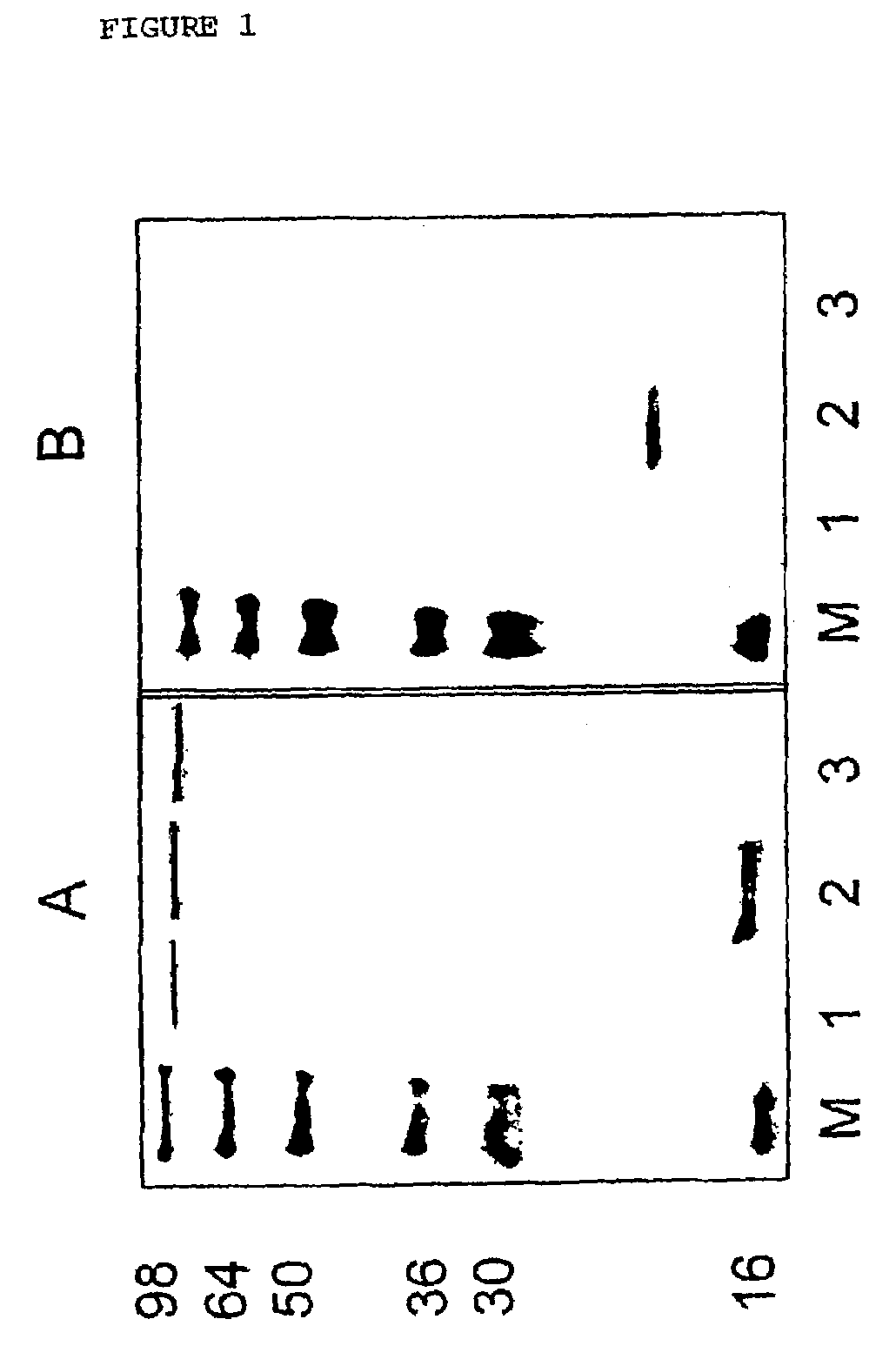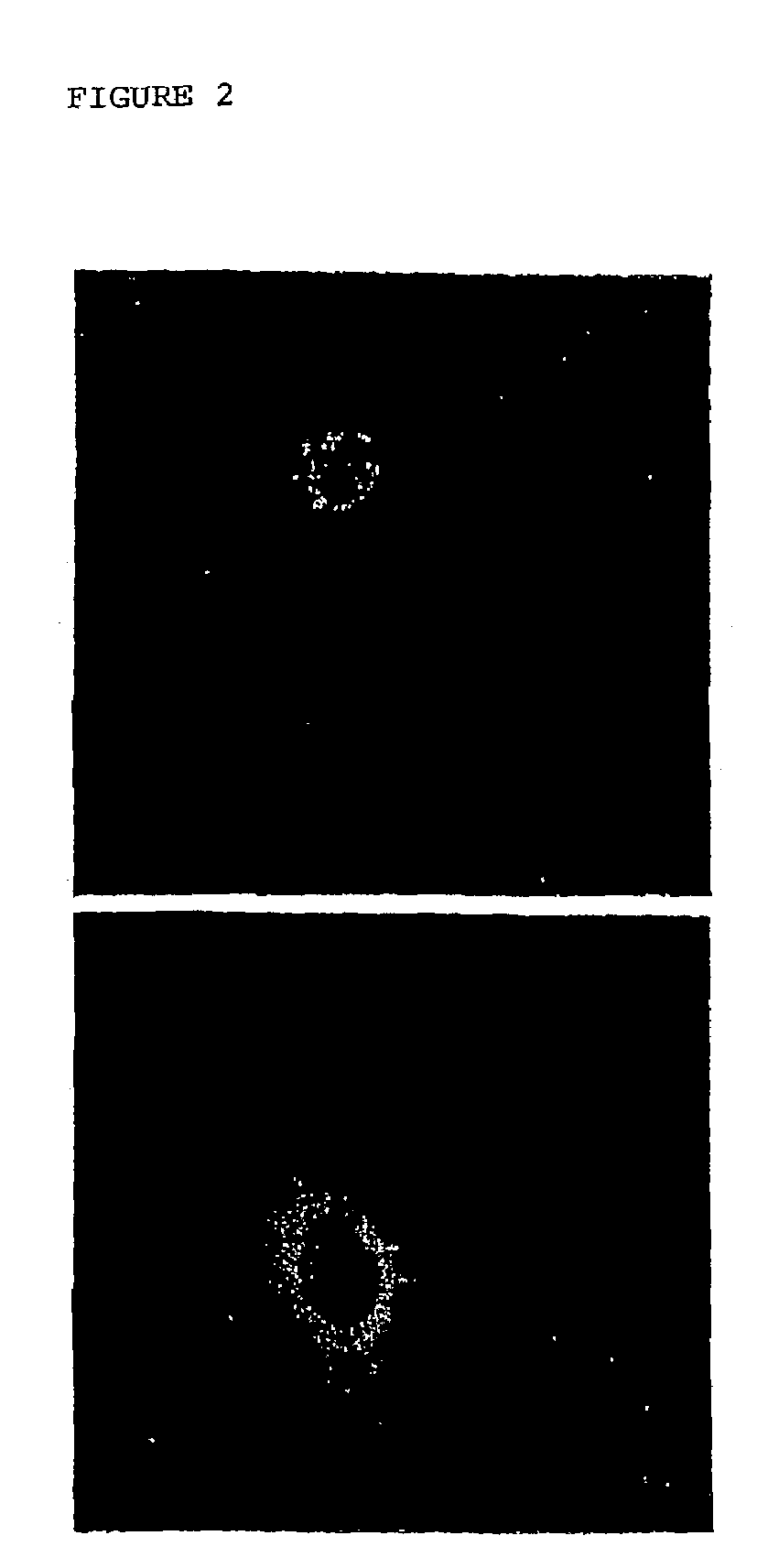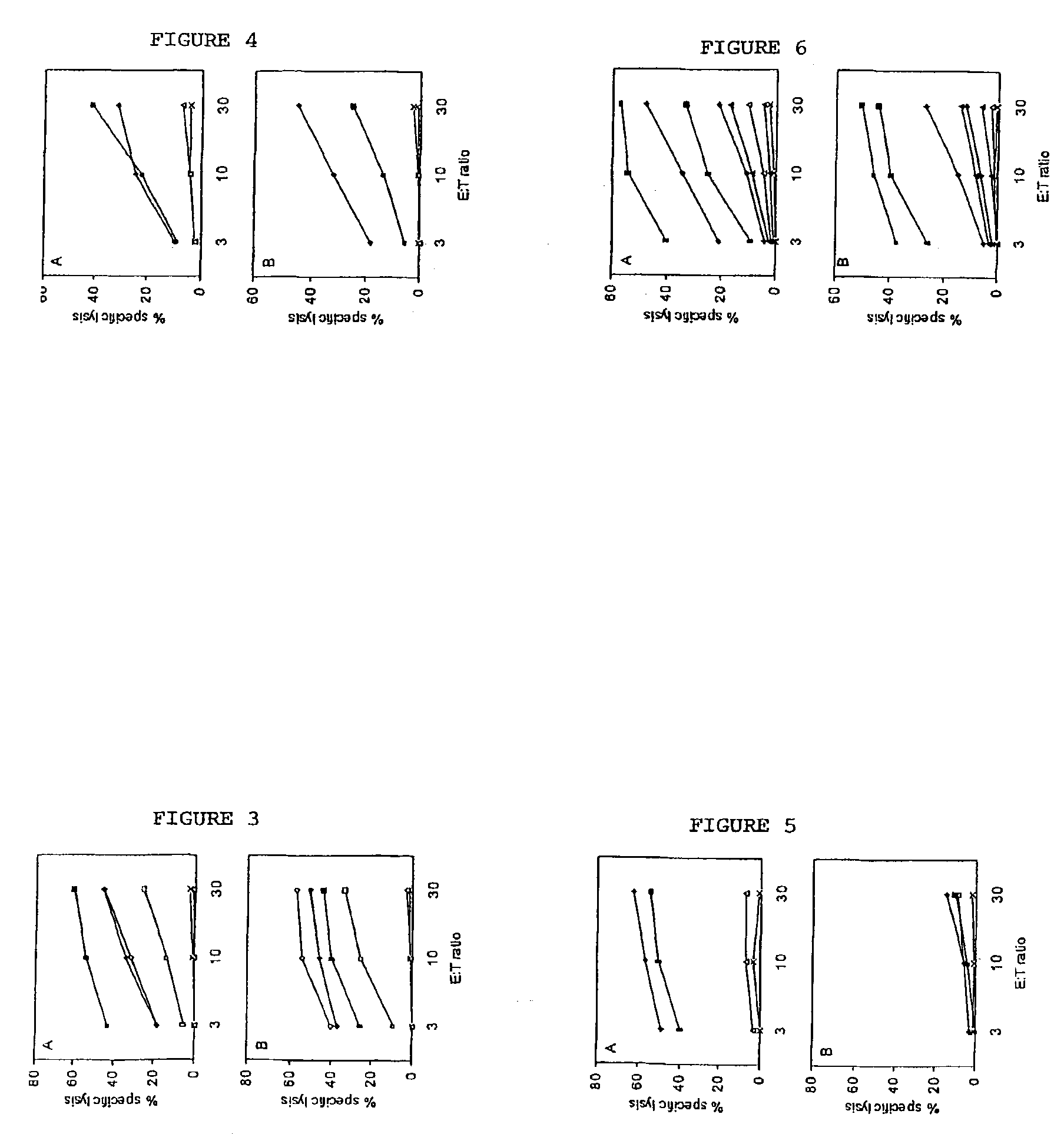Genetic immunization against cervical carcinoma
a technology of cervical cancer and immunization, applied in the field of cervical cancer, can solve the problems of mhc-polymorphism, and the risk of inducing t-cell tolerance rather than t-cell activation, and reducing the effectiveness of inducing hpv-specific ctl responses
- Summary
- Abstract
- Description
- Claims
- Application Information
AI Technical Summary
Benefits of technology
Problems solved by technology
Method used
Image
Examples
example 1
[0069]The construction of recombinant SFV encoding HPV16 E6 and E7 and the cellular immune response in mice induced by these recombinant SF-E6E7 particles is disclosed. Infection of genital epithelial cells with human papillomavirus (HPV) types 16 and 18 is closely associated with the development of cervical carcinoma. The transforming potential of these high-risk HPVs depends on the expression of the E6 and E7 early viral gene products. Since the expression of E6 and E7 is selectively maintained in premalignant and malignant cervical lesions, these proteins are attractive candidates for immunotherapeutic and prophylactic strategies.
[0070]The construction, characterization and the in vivo immunotherapeutic potential of recombinant Semliki Forest virus (SFV) expressing the HPV16 E6 and E7 proteins (SFV-E6E7) is disclosed herein. Western-blot analysis and immunofluorescence staining demonstrated expression of E6 and E7 in BHK cells infected with SFV-E6E7. Immunization of mice with SFV...
example 2
[0101]Two recombinant SFV plasmids that contain a translational enhancer were generated. One plasmid encodes a fusion protein of E6 and E7 by inserting one base pair between E6 and E7 and by changing the stop codon of E6. The resulting plasmid is named pSFV3-eE6,7 (FIGS. 9 and 19). In the other plasmid, the translational enhancer is placed in front of the original E6E7 construct, pSFV3-eE6E7.
Western Blot Analysis of Protein Expression.
[0102]To verify that SFV-eE6,7-induced expression of a recombinant fusion protein of E6 and E7, while SFV-E6E7 induces expression of the separate E6 and E7 proteins, lysates of cells infected with SFV-E6E7 or SFV-eE6,7 were compared by Western blot analysis. In addition, lysates of cells infected with the construct in which the translation enhancer was cloned in front of the original E6E7 construct, i.e., SFV-eE6E7, were analyzed.
[0103]In FIG. 10, Western blots probed with anti-HPV16 E6 or anti-HPV16 E7 are shown. Staining with both the anti-E6 and the...
PUM
| Property | Measurement | Unit |
|---|---|---|
| Fraction | aaaaa | aaaaa |
| Time | aaaaa | aaaaa |
| Time | aaaaa | aaaaa |
Abstract
Description
Claims
Application Information
 Login to View More
Login to View More - R&D
- Intellectual Property
- Life Sciences
- Materials
- Tech Scout
- Unparalleled Data Quality
- Higher Quality Content
- 60% Fewer Hallucinations
Browse by: Latest US Patents, China's latest patents, Technical Efficacy Thesaurus, Application Domain, Technology Topic, Popular Technical Reports.
© 2025 PatSnap. All rights reserved.Legal|Privacy policy|Modern Slavery Act Transparency Statement|Sitemap|About US| Contact US: help@patsnap.com



